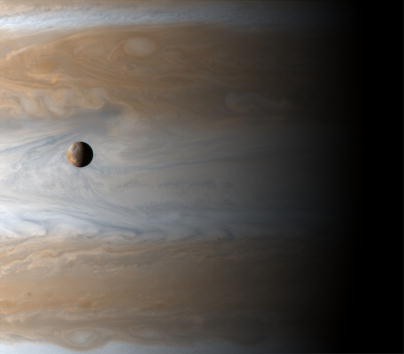
NASA's Europa Lander may dig into Jupiter's icy moon to find chemical evidence that it can host extraterrestrial life.
Europa contains twice as much water than Earth. Its surface is covered with ice that reportedly extends up to 15 miles (15 to 25 kilometers) in thickness. In its southern region, the Hubble Space Telescope of NASA has spotted water-vapor plumes. Thus, scientists believe that the Jovian moon may be able to sustain life.
What started as a flyby-only affair may be extended to landing and drilling to find pristine samples for study. However, the plan is not without complications since the landing itself could prove to be challenging and inconvenient because of firing thrusters that may slow down the space craft's descent, Space reported.
Europa is approximately the size of Earth's moon but it appearance and composition are distinct from the latter. It has an almost craterless surface of solid water ice with mysterious markings that gives it a cracked eggshell appearance, Solar Views reported.
Unlike Earth where organisms maintain a 21% oxygen atmosphere, Europa's oxygen is produced by non-biological processes. Europa's frigid conditions caused by very low temperatures is a concern for the landing since its surface will likely filled by ammonia that will make it hard for the scientists to figure out if the nitrogen detected is native or from Earth.
"The distribution of rocks could cause a lander to tip over, or it could fall into a crevasse. In space exploration, it's not good enough to speculate that this will work. Why throw 1 [billion] or 2 billion [dollars] into it?," planetary scientist Ralph Lorenz said.
Researchers think that going down beneath the surface is important. The mission will need to drill at least 4 inches down or to the extent where space radiation had not destroyed biogenic molecules that are essential for life.
Watch the clip below for more information:



